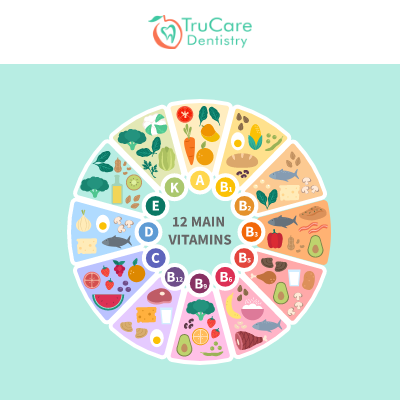
Do you know the health of our facial structure, jaws, and airway depends on what we eat? Yes, it’s true. Several studies conducted by various anthropologists and researchers while studying the difference between the jaws of urban and rural area people suggest that many common orthodontic issues experienced by people in urban areas are due to their soft modern diet. This kind of diet causes the jaw to grow short and small as compared to the size of their teeth. This further leads to teeth crowding issues.
The consequences of eating a soft diet are not just limited to crowded teeth and impacted molars. It also creates changes in the skeletal posture, creating difficulty in breathing. Even for the proper functioning of the brain, it requires enough oxygen. An inadequate supply of oxygen can lead to several health issues such as chronic sleep disorders. People with improper jaw growth and facial development are at a high risk of getting chronic sleep disorders.
Facial growth and the factors that influence facial development
Many studies have revealed that the vertical growth of the ramus and anterior translocation of the maxilla is the result of a hard diet that requires more chewing force and time. Both the dimensional changes and the lack of dental attrition may contribute to the higher occlusal variation of today’s people.
Key factors that influence facial development
Some of the key factors that can greatly influence facial development include:
- Proper nutrition
- Functioning of muscles
- Ability to breathe normally
Many common facial development abnormalities in children are the result of compromised airways or difficulty in breathing properly through the nose. When children can’t breathe properly through their nose, they tend to breathe more through their mouth. Continuous breathing from the mouth for a long time can severely impact not only the health of the children but also the development of their facial features and ultimately the way they will look when they become an adult.
Impact of mouth breathing on facial development
When a child breathes through the mouth, the tongue often positions itself in the lower jaw to allow a child to breathe more readily through the mouth. The pressure from the tongue on the lower jaw changes the growth of the jaw, making it grow more vertically. This makes the child’s face grow longer. Since the child is not breathing through the nose, the upper jaw and mid-face which includes nasal bones, bones supporting the tissue of the face, and the cheekbones do not grow properly at a normal rate. This happens due to the absence of natural growth stimulants of airflow through the nose. The long facial growth from the lower jaw and insufficient growth of the upper jaw and mid-face directly impacts the balance of facial features, appearance, and function of a child and later as an adult.
Role of the maxilla (upper jaw) in facial development and breathing
Being the center of the face, the development of the maxilla plays an important role in breathing and eating. A poorly formed maxilla can greatly affect facial features. It can also affect the eye sockets that are responsible for supporting and shaping the eyeball, leading to:
- Astigmatism
- Myopia
Since the maxilla also supports the nasal airways, a poorly formed maxilla can lead to:
- Deviated septum
- Asymmetrical noses
- Snoring
- Sleep apnea
When people breathe through their mouth, their lungs get dry easily due to infiltrated air and no nitric oxide. Their body consistently starves for oxygen which in the long run can harm their heart muscles and brain tissues.
The mandible and how it causes breathing issues
The mandible plays a key role in swallowing and breathing by offering a base for muscles of the tongue and throat. The mandible usually requires at least 35mm of bone behind the second molar to make place for the third molars. If this doesn’t happen, it can greatly impact the formation of wisdom teeth. In some cases, the wisdom teeth don’t even erupt properly.
As the maxilla helps in the formation of the nasal passage, the mandible also plays an important role in the formation of lower airways, also known as the soft palate. The tongue, which is a complex group of muscles, connects to the mandible, soft palate, and hyoid bone, providing great support for the airway.
In case the mandible doesn’t grow naturally, there will be no space for the tongue in the mandible. The tongue will fall back into the throat instead of staying and touching the roof. This will further result in the starving of the lungs for oxygen, causing sleep apnea. Sleep apnea is a condition that leads to pauses in breathing during sleep and snoring.
Role of nutrition in shaping our facial structure
Many studies have shown that eating a more refined and processed diet can impact the formation of palates. They don’t develop properly like our ancestors. Have a diet that makes you chew. You must include raw fruits and vegetables in your diet. Also don’t forget to include plenty of bone-building, calcium-rich sources such as almonds, kale, salmon, etc. Your diet should also contain adequate dietary fat and fat-soluble vitamins like vitamin A, D, E & K2.
To conclude, the normal formation of our face contributes to normal muscle tone which in turn facilitates normal breathing. Just remember that bone growth occurs in response to muscular mechanical forces. Just like other aspects of human body growth and development, nutrition plays a key role in the formation of teeth and bones.
